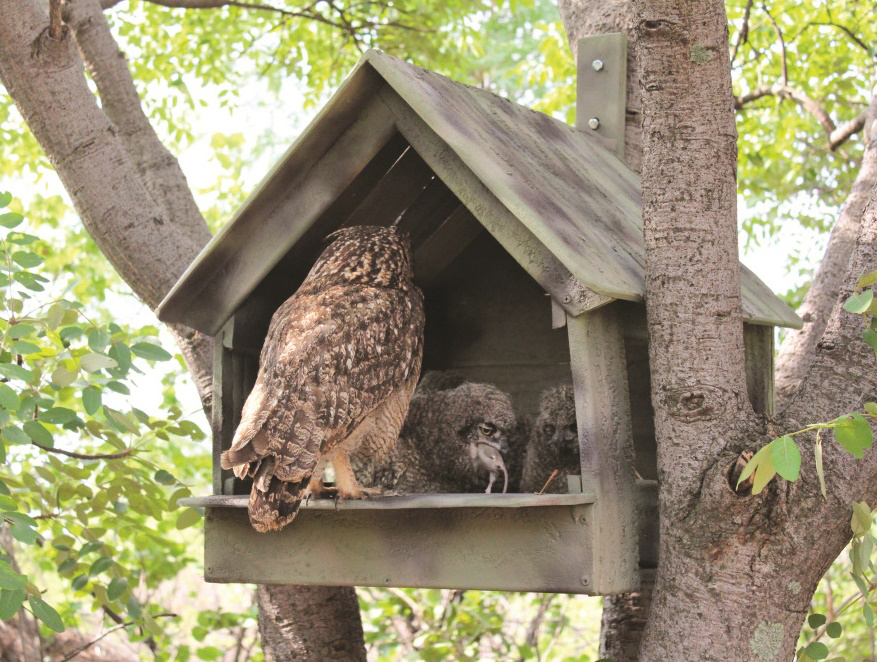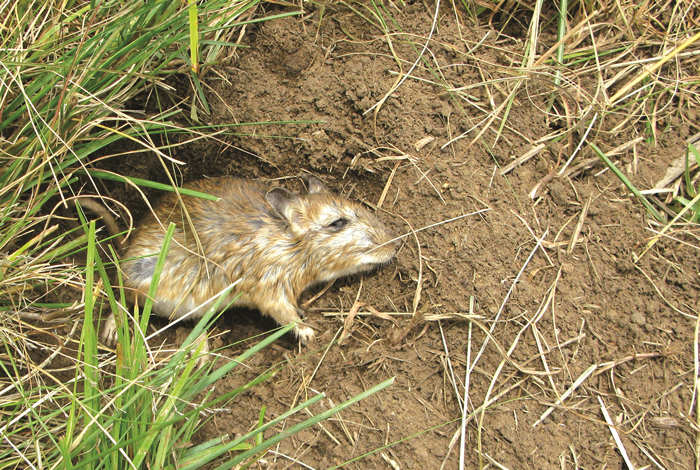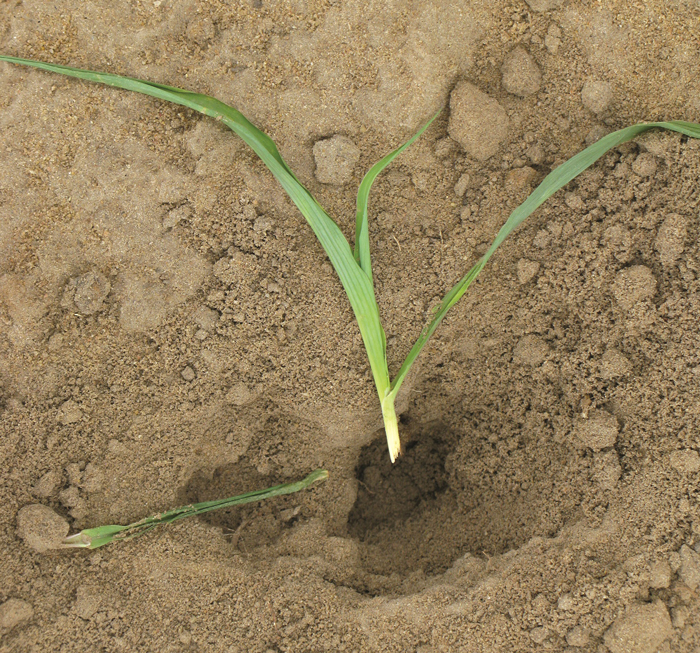April 2024
| DR GERHARD VERDOORN, OPERATIONS AND STEWARDSHIP MANAGER, CROPLIFE SA |  |
Gerbils are one of the agricultural pests that drive grain farmers into a frenzy. Unfortunately ignorance about gerbils still seems to be a problem, simply because farmers are often completely unfamiliar with their appearance and behaviour.
SIGNS OF GERBIL INFESTATION
These little pests can reduce a grain harvest by up to 70% if damage control is not done in a timely and effective manner.
The first signs of gerbil presence are usually a few round holes of approximately 50 mm in diameter linked to tunnels in headlands and on the outskirts of fields. Gerbils live underground and only come out to look for food – usually from very late in the afternoon until just before daylight. They overwinter in fields where their burrows and tunnel systems are easily overlooked because they are covered by natural vegetation.
However, once the summer planting starts, they move into the fields and establish colonies that can take over whole fields. There can be as many as ten holes on every square metre, and tunnels are often so extensive that tractors and implements get stuck in them. These conditions indicate an infestation of epidermic proportions that needs urgent action.

Invite owls to your property by putting up an owl house like this one where they can breed. The owls will help with the rodent problem.
(Source: https://www.owlrescuecentre.org.za/Owl-House-Project/)
ROLE OF CONSERVATION TILLAGE
Although minimum tillage practices are good for the farmer, the crop and the natural environment, this is one of the main reasons why gerbils have become a nuisance for many grain farmers in the last two decades. The role of deep tillage in soil health is often downplayed, while there are many merits for the grain farmer.
In the ‘good old days’, when fields were deep ploughed every season, plant residues were buried under the ground along with their transmitted diseases, pests and weeds, while gerbil colonies were also affected negatively.
Deep ploughing destroyed the dwelling and breeding place as well as the refuge of gerbils. Spilled grain was also buried. This would have been gerbil food if the fields had not been ploughed. With conservation tillage, ploughing rarely takes place. This not only leaves gerbil colonies undisturbed, but also leaves behind plant residues in which plant diseases and pests such as stump borer can survive. Returning to deep tillage every season will cause adverse effects on the soil itself.

This bushveld gerbil will not be a problem anymore.
Source: https://www.agtag.co.za/category/14/post/23936
SOLUTIONS
The most important objective to prevent gerbil damage is to prevent the numbers from increasing. It is better to tackle the problem holistically rather than with rodenticides (or rat poison, as it is com-
monly known).
Owls
The presence of owls is a wonderful way to limit the gerbil population. All owl species in the grain-producing areas hunt gerbils.
Erect suitable perches on poles that are 1,4 m to 2,4 m high to attract owls and other diurnal raptors, so they can quickly take care of the gerbil infestation. Owl boxes, like the well-known JoJo plastic ones and self-made wooden boxes, can also be put up as a breeding place for spotted eagle owls and barn owls.
Deep tillage
Deep tillage up to at least 500 mm deep is recommended every four years in areas where gerbils are endemic and can become epidemic. It is unnecessary to apply deep tillage if colonies are small and under control.
Rodenticides
Rodenticides can be used successfully against gerbils, but they carry a possible risk of secondary poisoning of owls, diurnal raptors and predators.
Not all poisons are registered for gerbils, simply because not all are successful against these pests. There are also various formulations such as wax blocks, granules (compressed grain), paste blocks and dusting powder to choose from.
Zinc phosphide bait
Zinc phosphide bait works very well, with an extremely low risk of secondary poisoning because the phosphine gas that kills the animal oxides to phosphoric acid. Aluminium phosphide tablets can also be used, but due to its high cost, it is recommended only for small-scale infestations. However, be aware that gerbils sometimes do not want to eat bait of any kind. In such a case, a trace powder must be used.
Plant a bait crop
A method that keeps gerbils out of fields when there are plantings, is to plant a metre-wide dense stand of a bait crop. It can be any crop that germinates with the maize or wheat and supplies the mice with excess food so that they do not target the new planting.

Gerbils not only cause damage to young maize plants, but consume freshly planted and germinating seed as well as ripening crops.
SEASONAL BEHAVIOUR
In the summer rainfall areas, gerbils are on the lookout for shelter and food from the end of August. Farmers should examine fields to determine if there is gerbil activity. If holes are detected in fields by the end of September, serious control must be done to curb the population.
Bait can be used if there is less than one hole every ten square metres, but if the density is closer to one hole every square metre, it is advisable to tackle the affected part of the field quickly with a plough. If not, it will be too late to do anything to prevent serious damage. They usually wait until the seed has germinated and has grown two leaves, after which they bite off the leaves and eat the soft seed.
In the winter months, it is desirable to use something like a bait pellet for the gerbils that have found a safe home in the fields. They usually eat these baits readily because natural food is scarce. This will have a big enough impact on the population so that they do not become epidemic when it is planting time.
Publication: April 2024
Section: Pula/Imvula